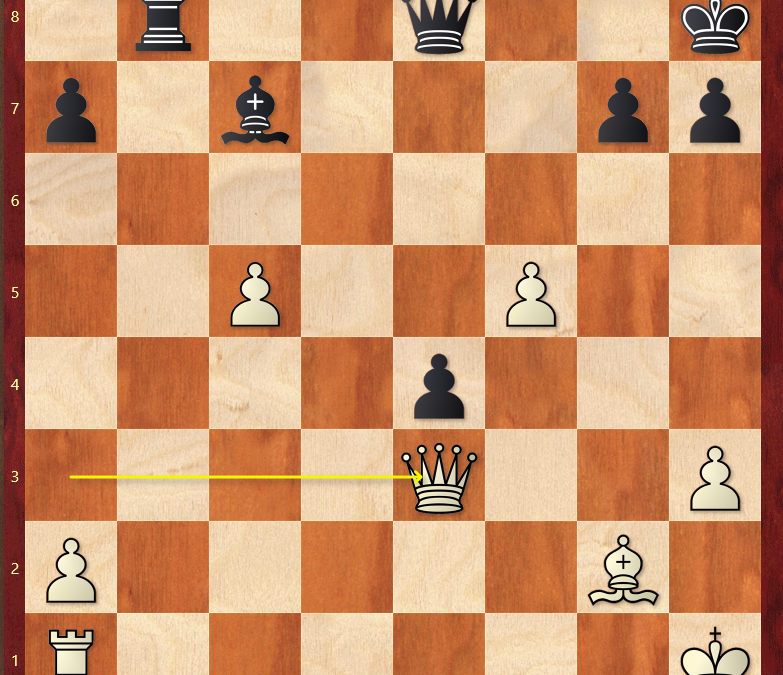A Unique Character
Opposite-coloured bishops impose their own set of characteristics on the board, giving the position a unique character. Below, we explore their defensive resources and dynamic attacking power.
How can black make use of the power of opposite-coloured bishops?
Defending Endgames
Endgames which would otherwise lead to a decisive result are often made defensible by the presence of opposite coloured bishops.
This is because the defending side can set up a blockade on the colour complex controlled by their own bishop. As the opposing bishop cannot attack these squares to break the blockade, the attacking side cannot make progress.
Schlechter gave a good example of this in his game against Barry at Cambridge Springs 1904.
Marshall also demonstrated the defensive power of opposite coloured bishops in his game against Janowski at Paris 1905.
Dynamic Middlegames
However, when other pieces remain on the board, the presence of opposite coloured bishops can favour the attacker.
This is because an attack is often based along squares of a particular colour. As the opposing bishop cannot defend the opposite colour complex, the attacking side effectively has an extra piece in the attack.
A good illustration of this concept occurred in the victory Tarrasch recorded in his win over Alekhine at Hamburg 1910.
Marshall used the dynamic power of attacking with opposite coloured bishops in his victory over Edward Lasker at New York 1924.
The lesson is clear: opposite coloured bishops can make difficult endgames defensible and insipid attacks dangerous!
For more resources to improve your game, remember to join the Elite Chess group at chesstribe.com!
If you have read this far, that means you’re interested in getting better at chess. You deserve to improve your chess skills. We want to help you do that. Click here to receive our FREE weekly newsletter: https://elitechess.co/shop/my-account/


Recent Comments